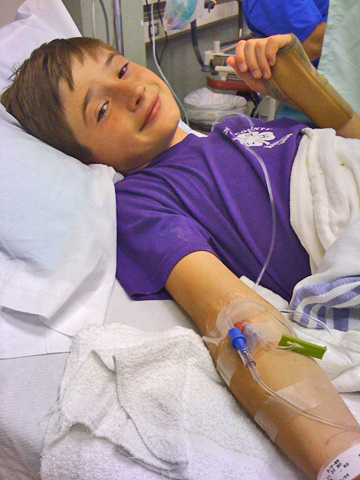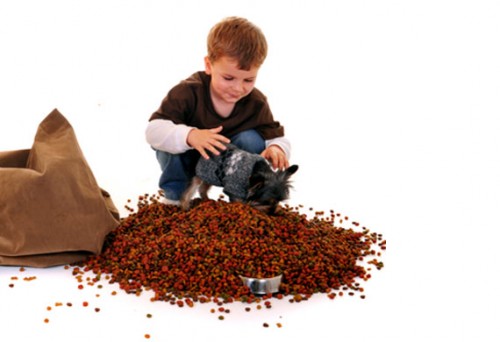Food Poisoning Outbreaks of 2012
Despite the relatively luxuriously life we live here in the US, as far as food standards go, foodborne illness (food poisoning) is common and can happen to anyone. How common is it? Well, about 1 in 6 Americans (48 million) get sick yearly. One hundred and twenty-eight THOUSAND are hospitalized and three thousand die. That, in probably the most food-safety conscious country in the world.
In 2012 the CDC released some statistics they have been keeping continuously on 10 major cities for over twelve years. Illnesses caused by most bacteria (like Listeria, E Coli, Campylobacter, Yersinia and a type of Shigella all steadily declined from 1996 to 2008. BUT no further since them. On the other hand Salmonella infection did not decline and continues to be the most common bacterial infection associated with the most hospitalizations and deaths.
In 2012 Salmonella, in all it’s types, was the most common foodborne bacterial pathogen responsible for illness in all states. And, there was some innovative and difficult detective work done to identify causes and stop the spread.
For example, there were 425 persons infected with Salmonella in 28 states and Washington, DC. They eventually found that most ill persons reported eating sushi made with raw ground tuna (the kind sold in grocery stores) days before getting sick. The FDA finally was able to do a traceback from the establishments where these people ate and found they all bought the same imported frozen, raw scraped ground tuna product from a single tuna-processing facility in India. The company stopped shipping the tuna and recalled 58,828 pounds of product, ending the outbreak.
In a separate but similar instance 46 persons became infected with Salmonella Enteritidis in 9 separate states. Time consuming interviews revealed that most reported eating ground beef in the week before their illness began and that a large number had purchased their meat from the same grocery store chain. The USDA was able to trace that meat back to a single supplier as well and 29,339 pounds of fresh ground beef products were recalled.
Such outbreaks of food poisoning involving ground beef had been, until this time, caused by E Coli and this marked the first time a recall was due to Salmonella – most likely not the last. The USDA posted the list of stores where the products were sold so consumers could to check their homes and freezers, for the recalled products.
 Salmonella was the cause of another outbreak in peanut butter as well. Forty-two persons became infected in 20 states and the majority of them had purchased a particular type of peanut butter from a particular specialty grocery store chain in the week before becoming ill. Most of those ill were children under the age of ten.
Salmonella was the cause of another outbreak in peanut butter as well. Forty-two persons became infected in 20 states and the majority of them had purchased a particular type of peanut butter from a particular specialty grocery store chain in the week before becoming ill. Most of those ill were children under the age of ten.
The store recalled all the jars and the FDA clamped down on the New Mexico facilities where the contamination occurred. Other products made at that facility were also recalled and their food facility registration was suspended due to other unsanitary findings as well. The only problem here is that many of the companies product have a very long shelf life and may be in people’s cupboards.
2012 wasn’t all just about Salmonella, Listeria in cheese caused a deadly outbreak. Twenty-two people got Listeria poisoning in 13 states and Washington, DC. There were 4 deaths, 1 fetal loss, and 20 hospitalizations before the outbreak ended. But just stop and think how hard this case was to solve. In any one state there were only 2 or 3 isolated cases. It can clearly ONLY have been the disease reporting laws which stopped this deadly thing before it spread country wide!
Specimens coming to the central CDC all turning out to have the same sero-type of Listeria was the only thing that saved us. That and the tireless slogging of state health workers who tried to get ill people to “remember what they had for lunch two weeks ago” before they even got sick. And, in this case, most could say it was cheese but gave different brands and types! Eventually the “smoking gun” was found when they cultured the same Listeria from several imported wheels of ricotta salata cheese.
The FDA refused to allow any more imports until that manufacturer could prove that new wheels were free of contamination. Why were people reporting different brands and types of cheese? Because, cutting boards, knives and other equipment had become contaminated and adequate hygene wasn’t maintained! The problem was on both sides.
Eleven states had twenty-nine people get severely ill with E Coli contamination and all were shown to have eaten at the same restaurant and all pointed to eating sandwiches containing raw clover sprouts. The FDA traceback went back to the same lot of sprouting seeds and two sprouting facilities stopped using that lot of seeds.
 Even though this outbreak was easier than others to investigate it is getting to the point where I would say “Enough is Enough!” Raw sprouts have been the culprit in several other outbreaks. Contaminated seed, contaminated sprouting medium, contaminated water, contaminated harvest, contaminated distribution – all can cause disease.
Even though this outbreak was easier than others to investigate it is getting to the point where I would say “Enough is Enough!” Raw sprouts have been the culprit in several other outbreaks. Contaminated seed, contaminated sprouting medium, contaminated water, contaminated harvest, contaminated distribution – all can cause disease.
In their wisdom the FDA advises: “that children, elderly adults, pregnant women, and persons with weakened immune systems avoid eating raw sprouts of any kind.” Well, yea! Definitely quit buying the things if we can’t trust their safety more than that! Can’t we get some common sense here? It would make more sense to demand that the sprouters PROVE their product is safe by doing cultures on seeds and medium than have the FDA and CDC spend millions of dollars trying to track them down after the fact! We make milk producers do it – just sayin’.
Two hundred and sixty-one people in twenty-four stated became ill with Salmonella and three of them died all tracked back to cantaloupe produced using poor practices at one Indiana farm.
One hundred and twenty-seven people in fifteen states bot Salmonella poisoning from eating mangos traced back to one farm in Mexico. The fruit was recalled and the importer was place on the FDA watch-alert list.
Salmonella infected 49 people in 20 states and Canada from contact with a dog who had eaten dog food produced in one particular plant in South Carolina. Salmonella was cultured from ill person’s homes, open dog food bags and unopened retail samples. Only multiple recalls of over thirty thousand tons of dog and cat food stopped the outbreak. The FDA does warn people that pet food isn’t produced to be sterile and we should be on the alert; BUT, COME ON HERE! I’m getting a bit ticked off here.
Absolutely NO food that any of us eat is sterile!!! Pets shouldn’t have any less standards to accept disease ridden food than we do. It seems to me that EVERY food producer are responsible to guarantee their product is free from these deadly strains of bacteria BEFORE it leaves their facility! Taking cultures of product IS CHEAP compared to treating the illnesses. And, of course, this is yet another case where the products can still be on the shelves!
As if this list of 2012 outbreaks aren’t bad enough – we are facing a terrible threat to continuing to identify and track these outbreaks. All this benefit is due only to the consolidated testing and reporting of culture based samples which are threatened by the development of quicker, non-culture-based tests. It is imperative that our mandated reporting laws be updated to maintain our current capabilities, for all of our sakes.

